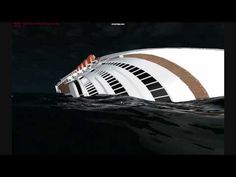
Its rigging integrated a main sail, upper sail, bowsprit with civadier typical of late medieval Cogs and latin sail on its rear mast.

It had to be around 35 meters for 12 meters wide at the waterline, with 3 decks, and of clinker construction (overlapping riveted planks), all in oak. This Northern Caravel was a type of evolved British Round Ship, 3/1 wide (three widths for a length). Navas, Cogs and Hulks will dominate the “Mar Antiqua” and spread throughout Europe from the year 800, taking us until the fifteenth century with the reign of the Carracks and Carwels of the great European explorers. The Ships, like those depicted on innumerable coins or as a symbol, were undoubtedly the emblematic ships of Europeans of that period. The Middle Age also sees the heavy Corbitas, Roman era cargo ships, having a sort of offspring in the form of a marriage between this type of ship with heavy load and the excellent marine qualities of the Drakkars, which will give the Cog and the Nava, Then the Hulk, a massively reinforced nava, ancestor of the carrack. They found however an inheritance in many sail-only vessels (like the Xebec, Polacca…), which thrived until the late XIXth Century. When oceanic navigation reached the ultimate degree of perfection, galleys definitely disappeared, their advantages no longer compensating for their heavy inconveniences. The galleys had meaning only in enclosed seas.

Curiously the last galleys battle will not take place in the Mediterranean, but in the Baltic Sea, between the Swedes and Russians. Galleys then began a slow decline, which ended in the eighteenth century. When the Arabs, who were “fallers” of the Byzantines later, they went to import the Chinese inventions (Compass, gunpowder, axial rudder…) and revolutionized European navigation in their turn. Genoese and Venetians will become specialists, employing them for unexpected roles such as trade, siege or transport of troops. On the other hand, in the Mediterranean, the work of the Byzantines, which took over the great fleets of galleys and took them to the Renaissance. On the one hand, there is the technical excellence of the Scandinavians, who will bring to the design of the ships a real empirical talent for hydrodynamics and construction with clinker, more solid.

This will result in a dialogue of several centuries between the Mediterranean and these various influences.

The medieval era devoted to the maritime scene the emergence of new techniques of construction and navigation, mainly from the North, with imports from the east (Arabs, and indirectly Chinese). Medieval ships: Transition and influences


 0 kommentar(er)
0 kommentar(er)
